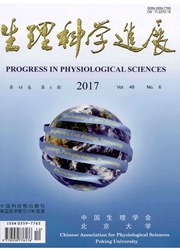

 中文摘要:
中文摘要:
胰岛素样生长因子-1(IGF-1)基因包含6个外显子,具有转录和翻译产物多样化的特点,原因在于存在多个转录起始位点的选择性应用,转录产物的选择性剪接,以及不同多聚腺苷酸化位点的使用。长期以来人们普遍关注由外显子3和4编码的循环型IGF-1在生长发育中的作用,最近对肌肉、神经等组织自分泌/旁分泌的局部型IGF-1研究发现,选择性剪接产生的IGF-1变体具有外显子5和6编码的延伸肽(E肽),并表现出特殊的生物学功能,如IGF-1Ea、IGF-1Eb(MGF)及其E肽在骨骼肌、心肌、神经等组织中表现出促进生长和损伤修复的功能,这些特殊功能可能通过细胞表面的一种特殊E肽受体介导。
 英文摘要:
英文摘要:
The IGF-1 gene, containing six exons, is characterized by the generation of multiple heterogeneous mRNA transcripts and translations. The IGF-1 isoforms being produced arise from the combination of mutiple transcription initiation sites, alternate splicing, and different polyadenylation signals. These different mRNAs are translated to distinct circulating and local isoforms. The circulating mature IGF-1 is encoded by exons 3 and 4, and its biological function in growth and developmen has been intensively studied. The loclal isoforms of IGF-1 contains the part encoded by exons 3 and 4, and moreover the alternate extension peptide at carboxy-terminal, encoded by exons 5 and 6, is also included in the isoforms. And the functions of local IGF-1 isoforms and E-peptides have been overlooked until recently. Recently investigation shows that cell discrepant response to the overexpression of different IGF-1 isoforms and the E-peptides, and more interestingly, IGF-1Ea, IGF-1Eb (MGF) and MGF E-peptide have potential to promote skeletal muscle regeneration, to prevent cardiac muscle loss and neural damage. The acting mechanism of IGF-1 isoforms differ from the IGF-1, and the isoforms functioned probably by binding to specific E-peptide receptor, instead of binding to the IGF-1R.
 同期刊论文项目
同期刊论文项目
 同项目期刊论文
同项目期刊论文
 期刊信息
期刊信息
